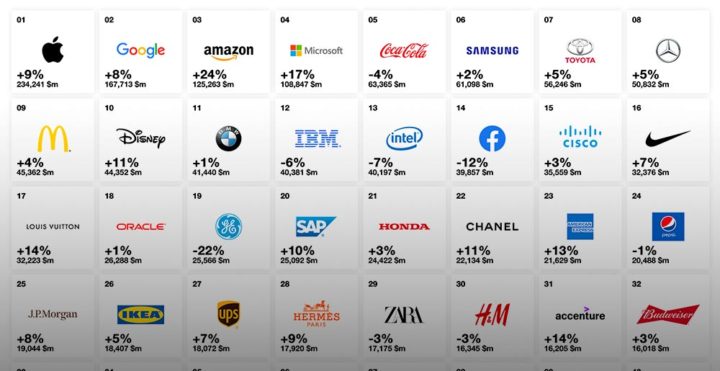Automatic Technology: Shaping Our Future
Automatic technology, the driving force behind countless advancements, has revolutionized the way we live, work, and interact with the world around us. From the humble beginnings of automated machinery to […]

Automatic technology, the driving force behind countless advancements, has revolutionized the way we live, work, and interact with the world around us. From the humble beginnings of automated machinery to the sophisticated artificial intelligence of today, the journey of automatic technology is a testament to human ingenuity and its potential to shape the future.
This exploration delves into the various facets of automatic technology, examining its historical evolution, diverse applications, societal impact, and promising future. By understanding the principles, benefits, and challenges associated with this transformative force, we can navigate its complexities and harness its potential for a brighter tomorrow.
Definition and History of Automatic Technology

Automatic technology, also known as automation, refers to the use of technology to perform tasks automatically, reducing or eliminating human intervention. It encompasses a wide range of technologies, from simple mechanical devices to complex computer systems.
The history of automatic technology stretches back centuries, with its roots intertwined with the evolution of human ingenuity and the desire to simplify labor. Early examples of automation can be traced back to ancient civilizations.
Early Developments
Ancient civilizations witnessed the emergence of simple automation techniques. Waterwheels and windmills were employed for tasks such as grinding grain and powering irrigation systems. The ancient Greeks developed intricate mechanical devices, such as the Antikythera mechanism, a complex astronomical calculator. These early inventions laid the foundation for the development of more sophisticated automatic technologies.
The Industrial Revolution
The Industrial Revolution marked a significant turning point in the history of automatic technology. The invention of the steam engine in the 18th century provided a new source of power, enabling the development of machines capable of performing complex tasks. The textile industry saw the introduction of power looms and spinning machines, which significantly increased production efficiency.
- The Spinning Jenny (1764): Invented by James Hargreaves, this machine allowed a single operator to spin multiple threads simultaneously, significantly increasing yarn production.
- The Power Loom (1784): Invented by Edmund Cartwright, the power loom mechanized the weaving process, replacing hand looms and boosting textile production.
The Industrial Revolution also witnessed the development of other key technologies, such as the steam-powered locomotive and the telegraph, which further accelerated the adoption of automation in various sectors.
Types of Automatic Technology
Automation encompasses a wide range of technologies that perform tasks previously done by humans. These technologies vary in complexity, application, and underlying principles, but they all share the goal of increasing efficiency, productivity, and accuracy.
Types of Automatic Technology Based on Function
Automation technologies can be categorized based on their primary function. Here are some key types:
- Process Automation: This type focuses on automating repetitive or complex tasks within a specific process. Examples include robotic process automation (RPA) used in data entry and customer service, and automated manufacturing systems in factories.
- Decision Automation: This involves automating decision-making processes based on predefined rules or algorithms. Examples include fraud detection systems in finance, risk assessment tools in insurance, and automated trading platforms in financial markets.
- Physical Automation: This category includes technologies that automate physical tasks. Examples include robots used in manufacturing, autonomous vehicles in transportation, and automated surgical systems in healthcare.
- Cognitive Automation: This advanced type of automation leverages artificial intelligence (AI) and machine learning to automate tasks that require cognitive abilities, such as natural language processing, image recognition, and data analysis. Examples include chatbots for customer service, AI-powered medical diagnosis systems, and self-driving cars.
Examples of Automation in Different Industries
Automation has revolutionized various industries, improving efficiency, productivity, and quality.
- Manufacturing: Automated assembly lines, robotic arms, and computer-aided design (CAD) software have transformed manufacturing processes, leading to increased production speed, reduced errors, and improved product consistency.
- Transportation: Autonomous vehicles, traffic management systems, and automated logistics networks are changing the way we travel and transport goods.
- Healthcare: Automation is used in medical diagnosis, drug discovery, robotic surgery, and patient monitoring, leading to improved accuracy, faster diagnosis, and personalized treatments.
- Finance: Automated trading systems, fraud detection algorithms, and robo-advisors are transforming the financial services industry, enabling faster transactions, reduced risks, and personalized financial advice.
Characteristics, Benefits, and Drawbacks of Different Types of Automatic Technology
| Type of Automation | Key Characteristics | Benefits | Potential Drawbacks |
|---|---|---|---|
| Process Automation | Repetitive tasks, rule-based, data-driven | Increased efficiency, reduced errors, cost savings | Limited adaptability, potential job displacement, dependence on data quality |
| Decision Automation | Data analysis, algorithm-driven, predictive modeling | Improved decision-making, faster response times, reduced bias | Algorithmic bias, lack of transparency, potential for unintended consequences |
| Physical Automation | Robots, machines, sensors, actuators | Increased productivity, improved safety, reduced labor costs | High initial investment, potential job displacement, safety concerns |
| Cognitive Automation | AI, machine learning, natural language processing | Enhanced problem-solving, personalized solutions, improved accuracy | Ethical concerns, data privacy issues, potential for bias |
Impact of Automatic Technology on Society
Automatic technology has become an integral part of our lives, transforming various aspects of society and impacting the way we live, work, and interact with the world around us. Its influence is multifaceted, bringing forth both positive and negative implications that necessitate careful consideration and adaptation.
Positive Impacts of Automation
The implementation of automation has yielded numerous positive impacts on society, enhancing efficiency, productivity, and safety in various domains.
- Increased Efficiency and Productivity: Automation has significantly enhanced efficiency and productivity across industries. Robots and automated systems can perform tasks with precision and speed, reducing human error and minimizing downtime. For example, in manufacturing, automated assembly lines have streamlined production processes, leading to higher output and lower costs.
- Improved Safety: Automation has contributed to a safer working environment by taking over hazardous or repetitive tasks that pose risks to human workers. For instance, in construction, robots can perform tasks like demolition or welding, minimizing the risk of accidents.
- Enhanced Quality and Consistency: Automated systems are capable of maintaining consistent quality and precision in tasks that require high accuracy, such as medical diagnostics or manufacturing processes. This ensures uniformity and reliability in output, leading to improved product quality and customer satisfaction.
- New Opportunities and Innovation: Automation has opened up new opportunities and fostered innovation in various fields. By automating mundane tasks, humans can focus on more creative and strategic endeavors, leading to advancements in research, development, and problem-solving.
Potential Negative Impacts of Automation
While automation offers numerous benefits, it also presents potential negative impacts that require careful consideration and mitigation strategies.
- Job Displacement: A major concern associated with automation is the potential for job displacement. As machines become more sophisticated and capable, they can replace human workers in various tasks, leading to unemployment. This is particularly concerning in industries with repetitive or manual labor, such as manufacturing, transportation, and customer service.
- Economic Inequality: The benefits of automation may not be evenly distributed, leading to economic inequality. While some individuals and businesses may prosper from automation, others may face job losses and reduced earning potential. This can exacerbate existing social and economic disparities.
- Ethical Concerns: The increasing use of automation raises ethical concerns, particularly regarding decision-making processes. For instance, automated systems used in criminal justice or healthcare may exhibit biases or make decisions that are not in the best interest of individuals.
Societal Implications of Automation, Automatic technology
Automation has significant societal implications, impacting social structures, work patterns, and the future of employment.
- Changing Work Patterns: Automation is transforming the nature of work, leading to a shift from manual labor to more knowledge-based and creative tasks. This necessitates a workforce with specialized skills and adaptability to evolving work demands.
- The Future of Employment: The rise of automation raises questions about the future of employment. While some jobs will be displaced, new opportunities are likely to emerge in fields related to automation, such as robotics, data analysis, and software development.
- Social Structures: Automation may also impact social structures, as individuals spend less time in traditional work settings and more time in leisure activities or online communities. This can lead to changes in social interactions, community engagement, and the distribution of wealth and resources.
Examples of Automatic Technology in Action
Automatic technologies are not theoretical concepts; they are actively shaping our world, revolutionizing various sectors and impacting our daily lives. Let’s explore some prominent examples of automatic technologies in action, examining their operation, benefits, and limitations.
Robots in Manufacturing
Robots are widely used in manufacturing for tasks that are repetitive, dangerous, or require high precision. These robots are programmed to perform specific tasks, such as welding, painting, assembly, and packaging.
- How they operate: Robots in manufacturing are typically equipped with sensors, actuators, and control systems. Sensors gather information about the environment, actuators perform physical tasks, and control systems process information and coordinate actions.
- Benefits: Robots in manufacturing offer numerous benefits, including increased productivity, improved quality, reduced costs, and enhanced safety.
- Limitations: While robots are highly efficient, they can be expensive to implement and maintain. They also lack the flexibility and adaptability of human workers, requiring specialized programming for each task.
“Robots are not going to take over the world, but they are going to take over many jobs.” – Elon Musk
Self-Driving Cars
Self-driving cars, also known as autonomous vehicles, are equipped with sensors, cameras, and advanced algorithms that enable them to navigate roads without human intervention.
- How they operate: Self-driving cars use a combination of sensors, such as LiDAR, radar, and cameras, to perceive their surroundings. These sensors gather data, which is processed by algorithms to make decisions about steering, acceleration, and braking.
- Benefits: Self-driving cars promise increased safety, reduced traffic congestion, and enhanced mobility for people with disabilities.
- Limitations: The development of self-driving cars is still in its early stages, and there are concerns about safety, ethical considerations, and legal complexities.
Automated Trading Systems
Automated trading systems, also known as algorithmic trading, use computer programs to execute trades based on predefined rules and algorithms.
- How they operate: Automated trading systems analyze market data, identify trading opportunities, and execute trades automatically based on predefined parameters.
- Benefits: Automated trading systems offer advantages such as faster execution speeds, reduced emotional bias, and the ability to analyze vast amounts of data.
- Limitations: Automated trading systems can be susceptible to errors and market fluctuations. They also require careful monitoring and adjustments to ensure their effectiveness.
Ultimate Conclusion: Automatic Technology
As automatic technology continues to evolve at an unprecedented pace, its impact on our lives will only intensify. From reshaping industries to redefining the nature of work, the future holds both exciting opportunities and complex challenges. By embracing a thoughtful and responsible approach, we can ensure that automatic technology serves as a catalyst for progress, fostering a more efficient, sustainable, and equitable future for all.
Automatic technology is rapidly changing the world, from self-driving cars to automated manufacturing. This evolution is creating exciting new opportunities, and it’s crucial to ensure that women are well-represented in this field. The orangesoft women in technology scholarship program is a fantastic initiative that supports women pursuing careers in technology, helping to bridge the gender gap and foster a more inclusive future for automatic technology.








